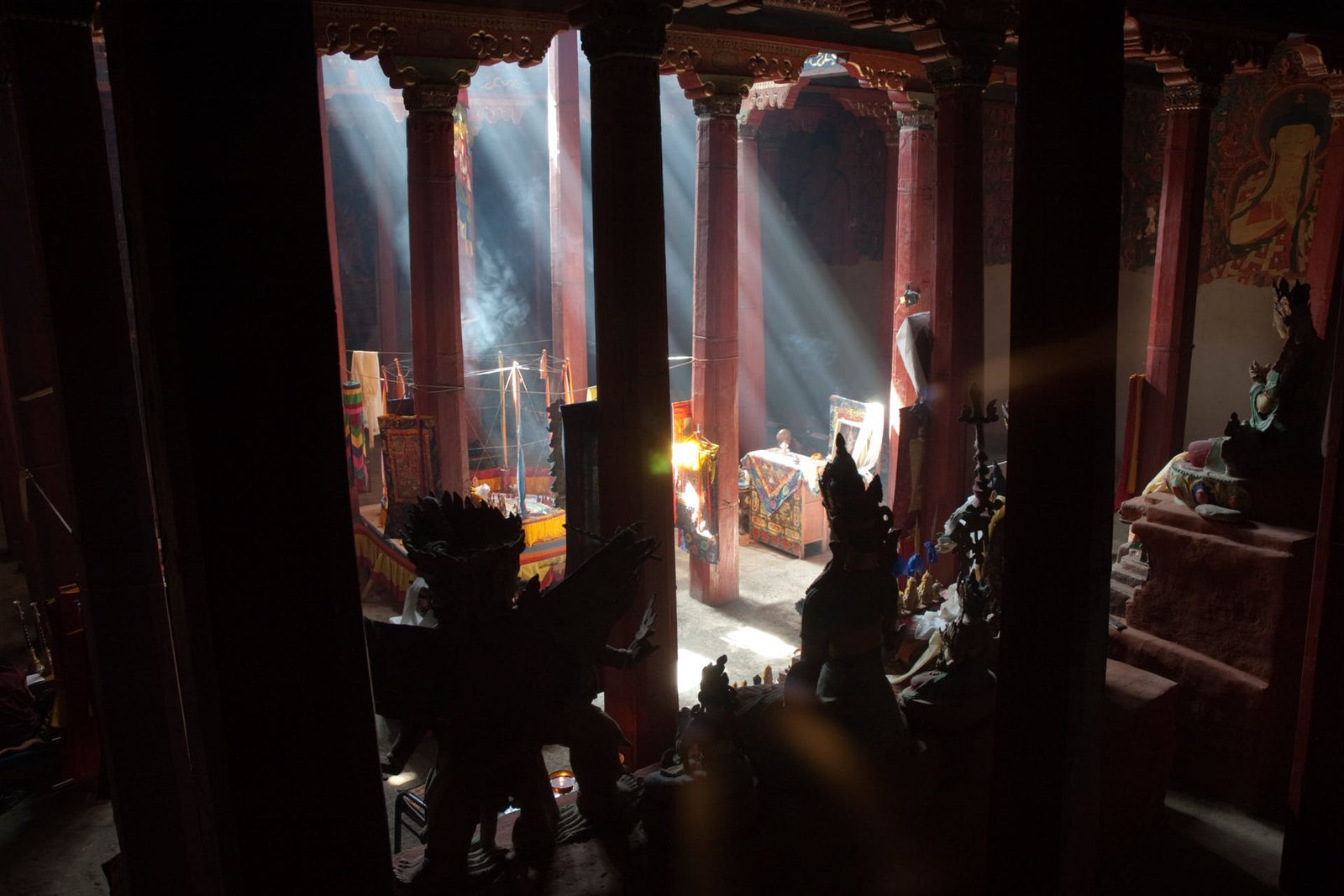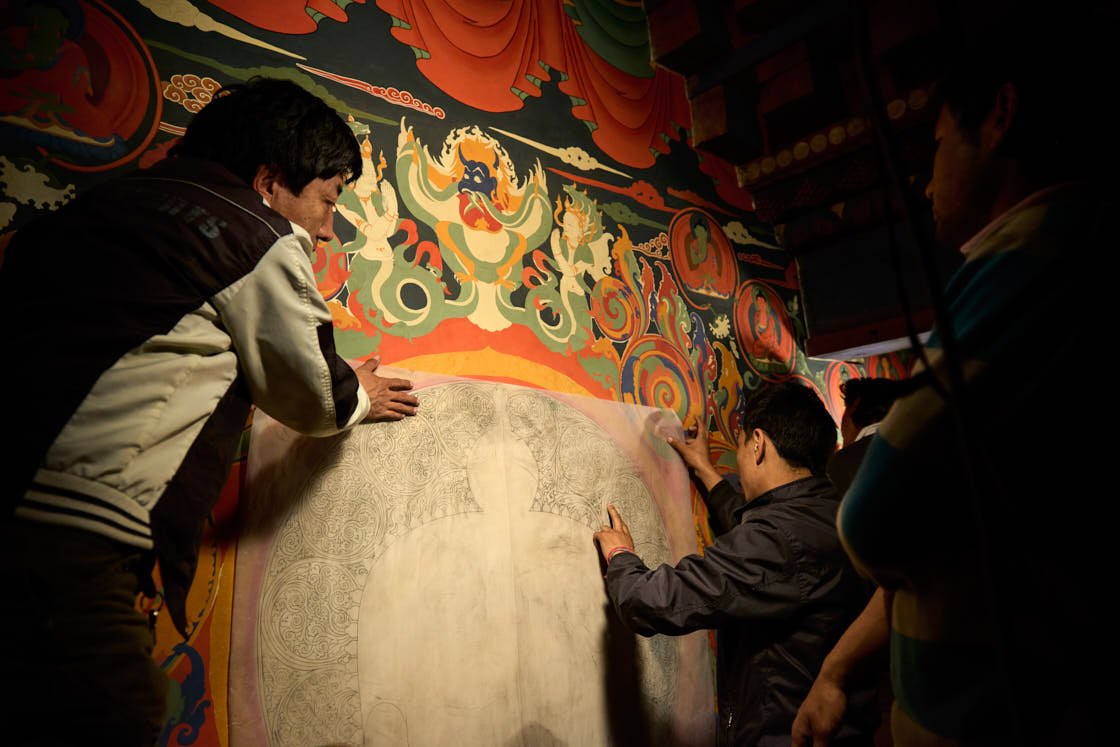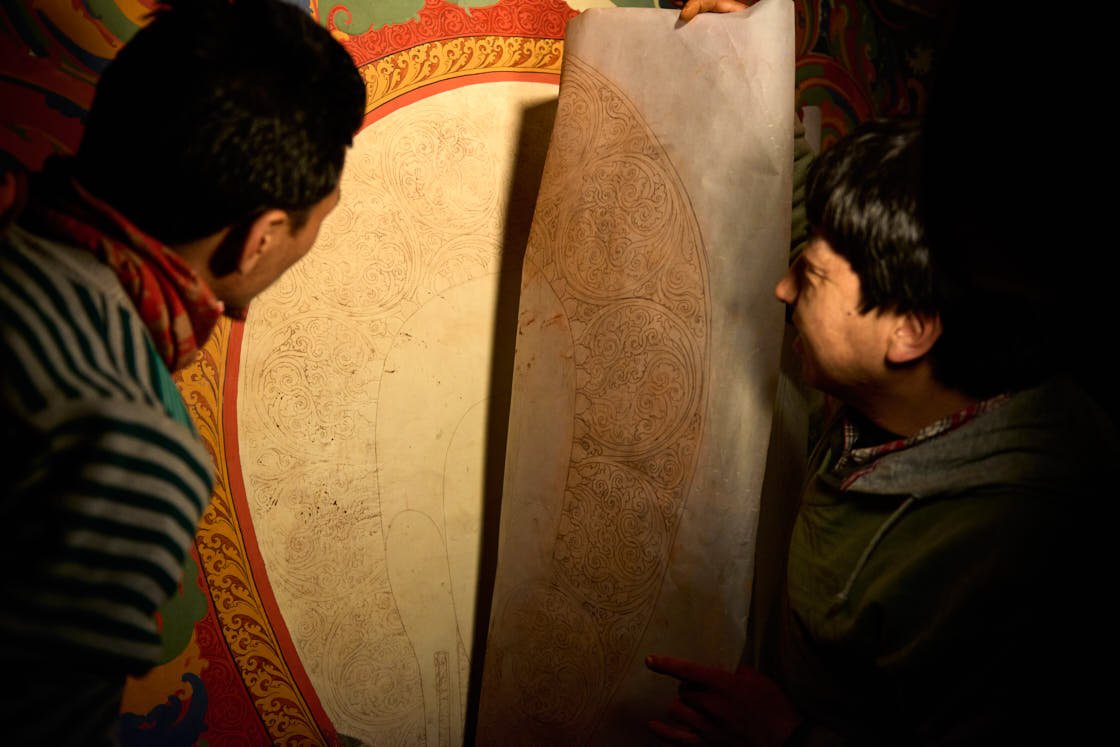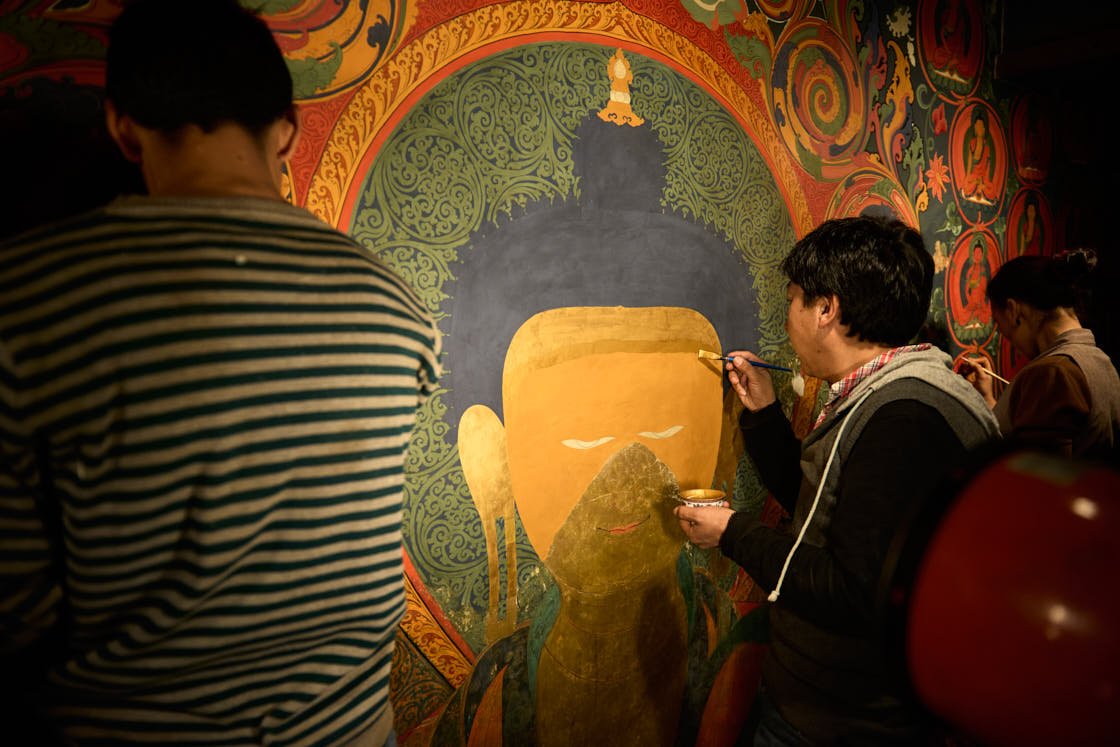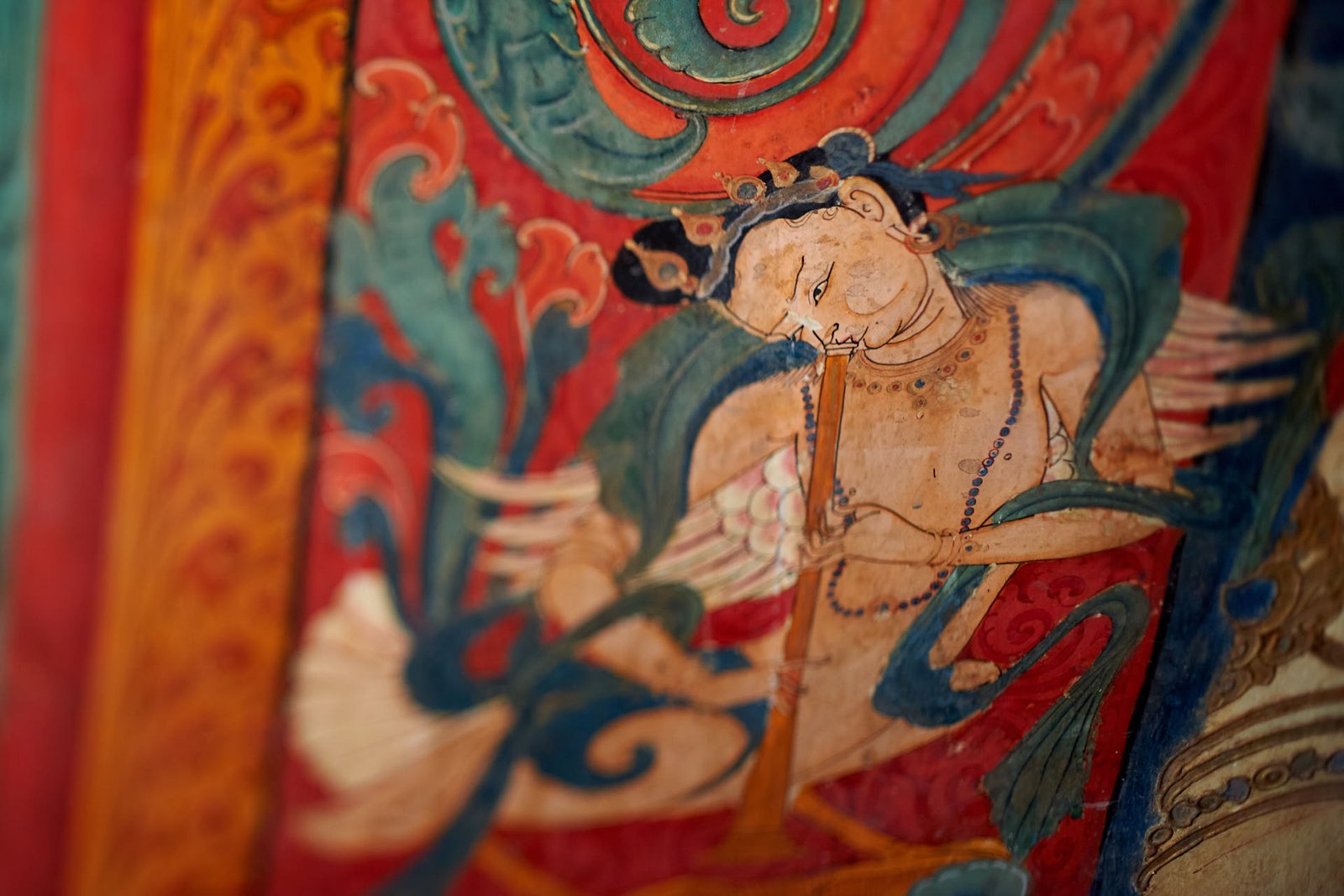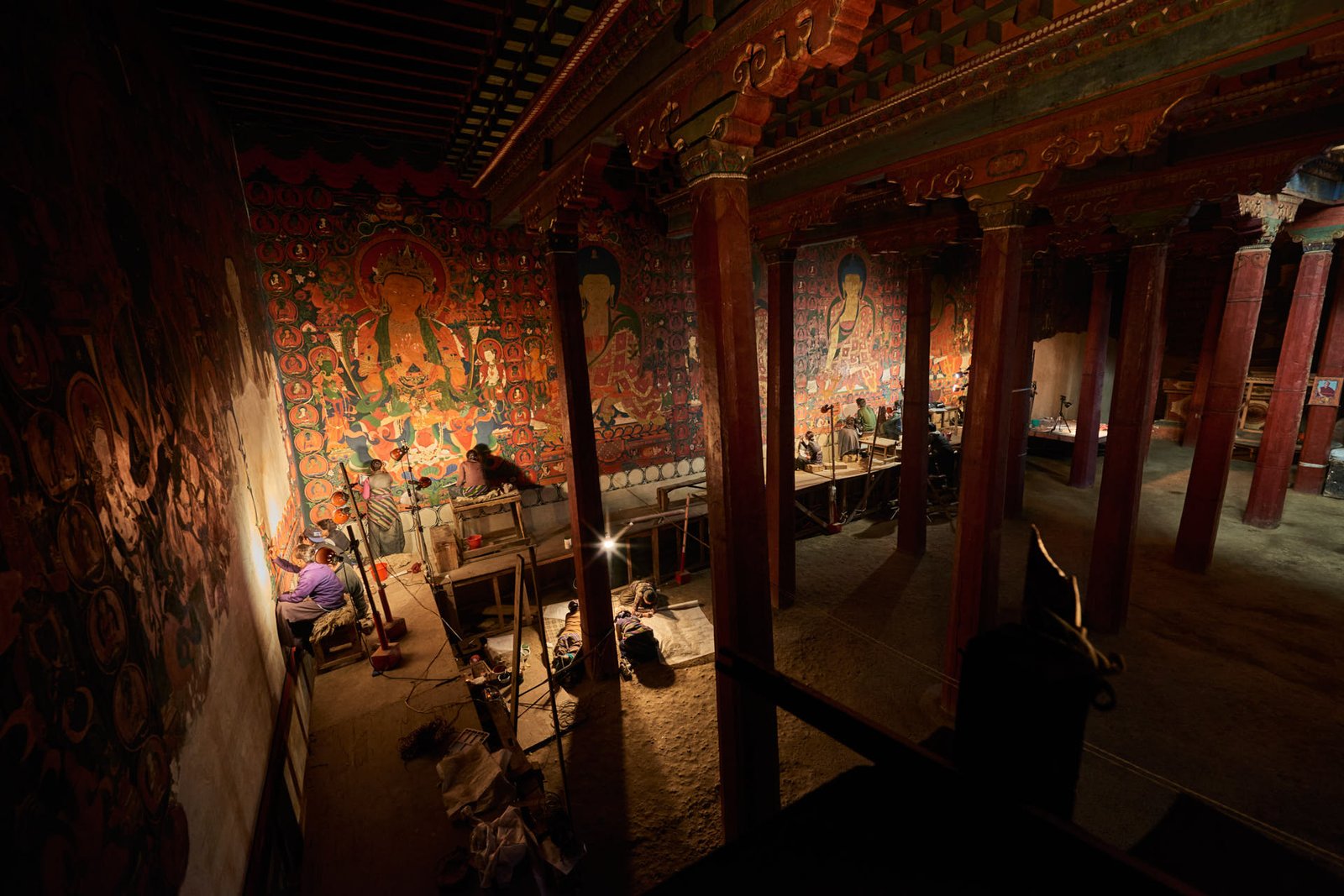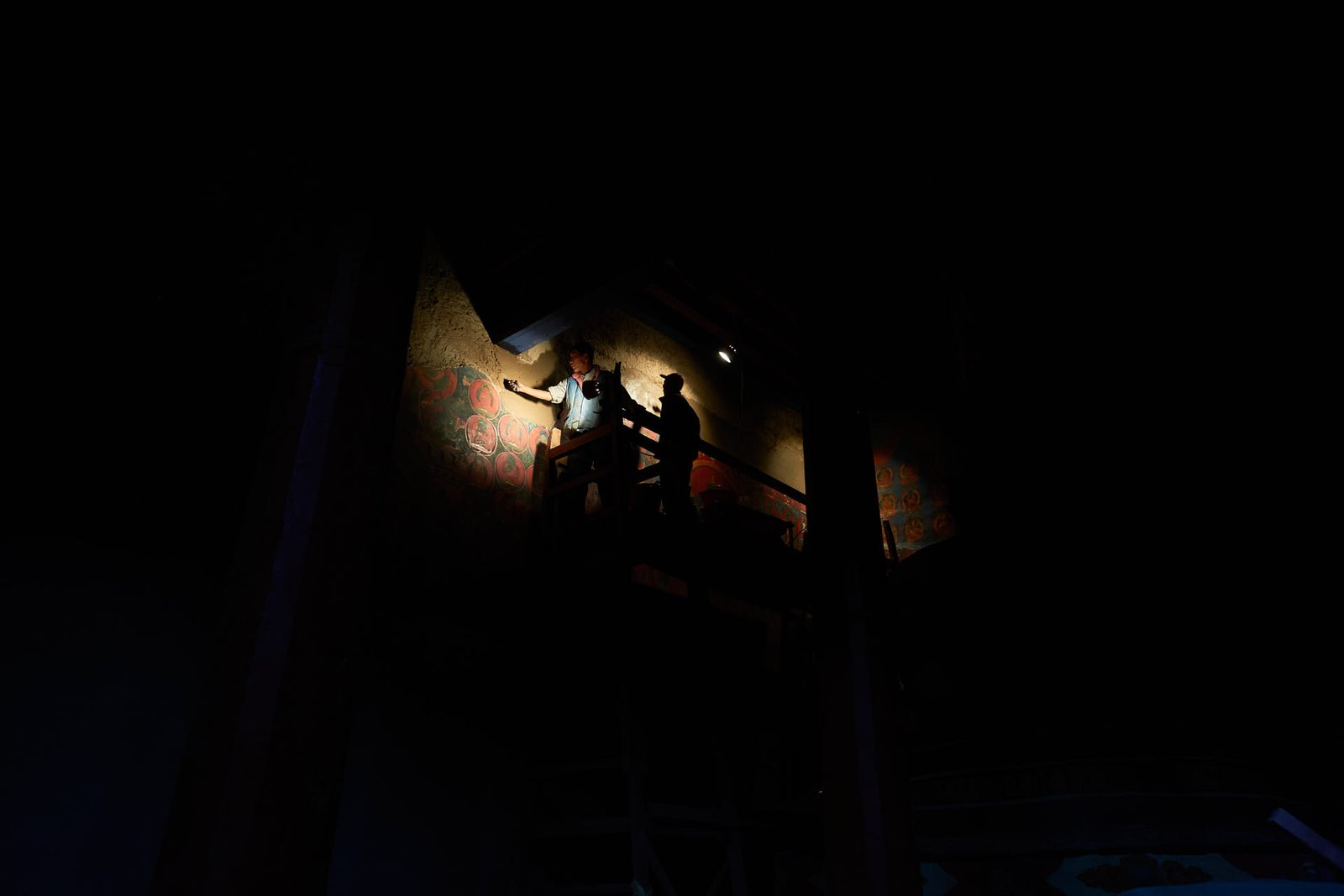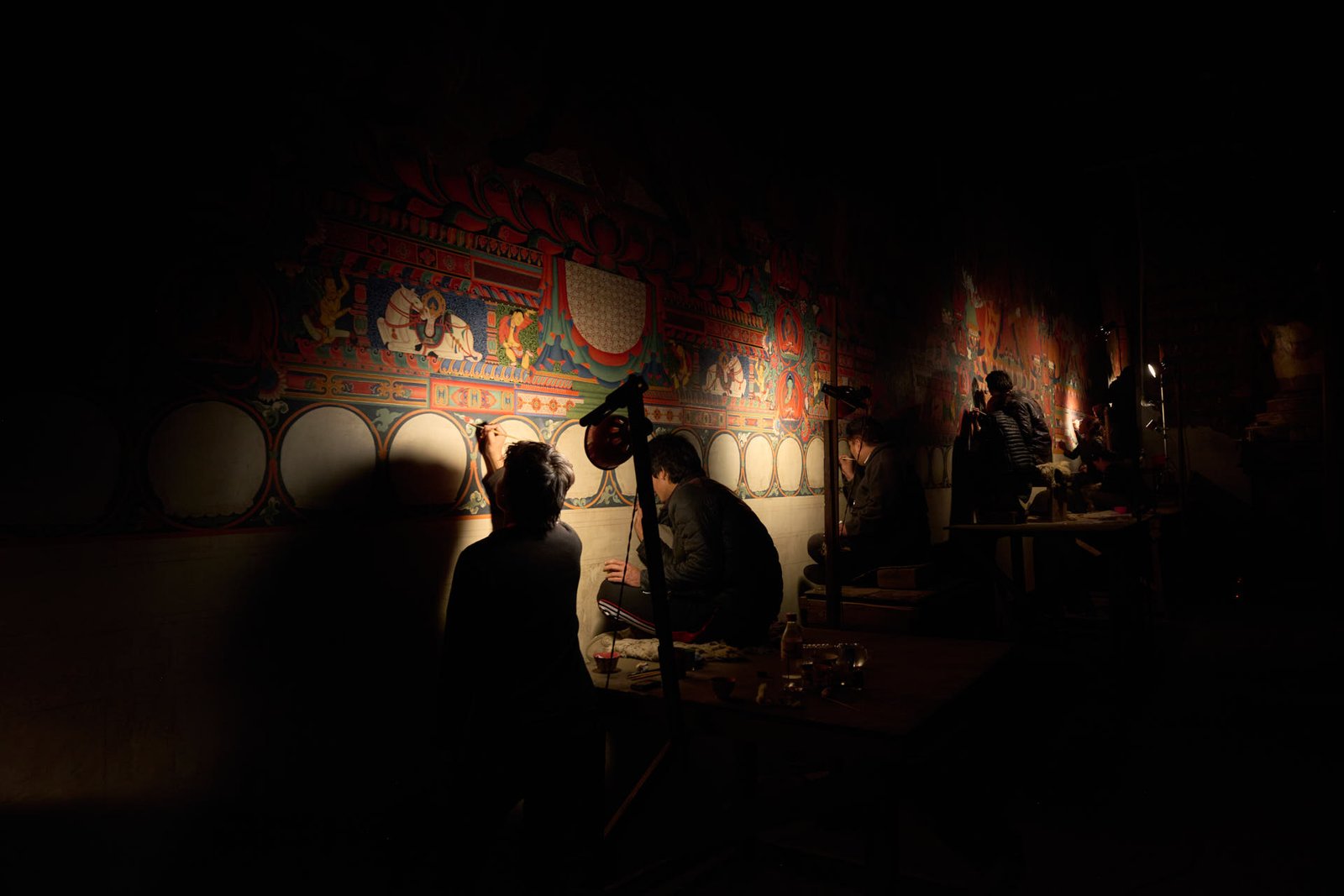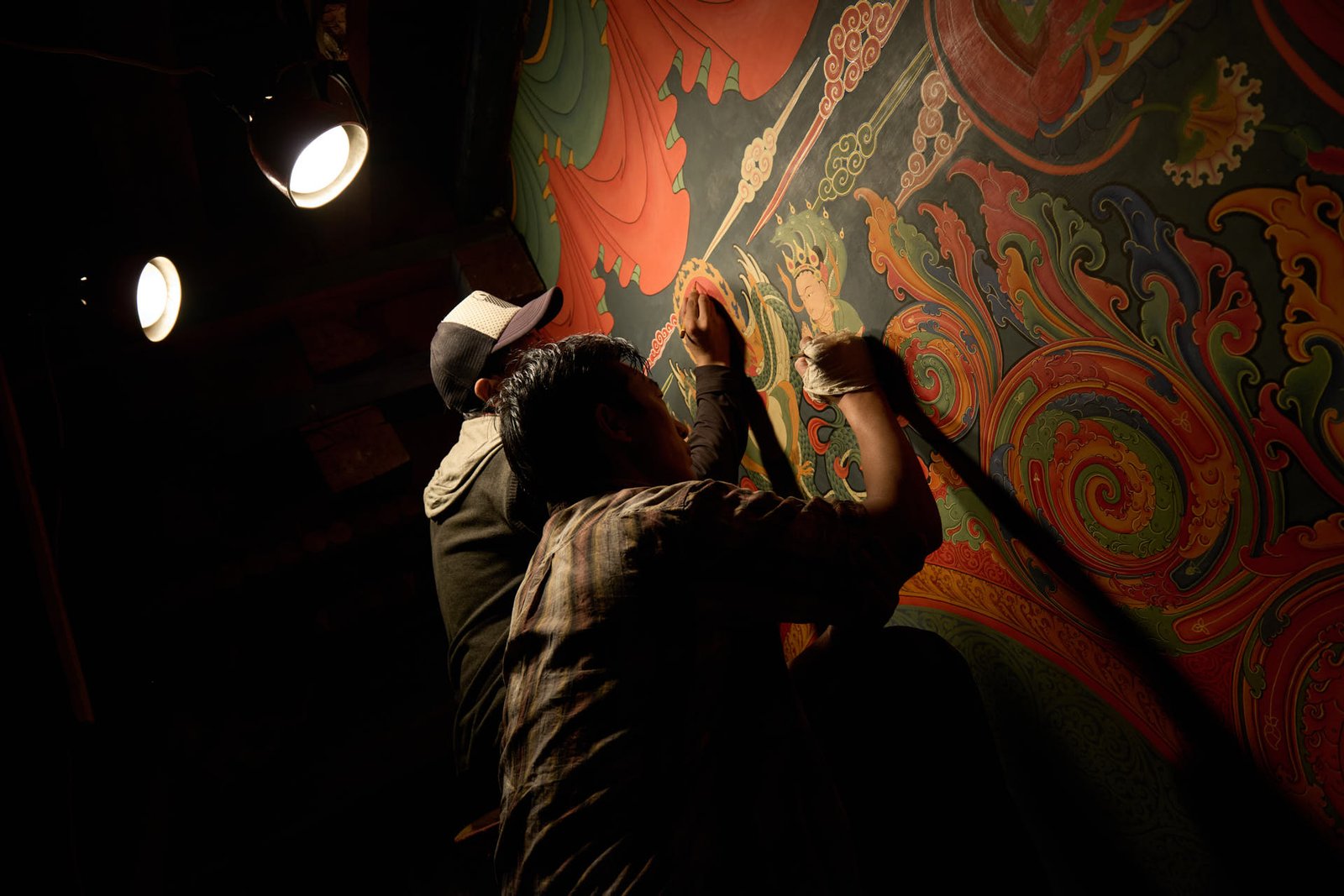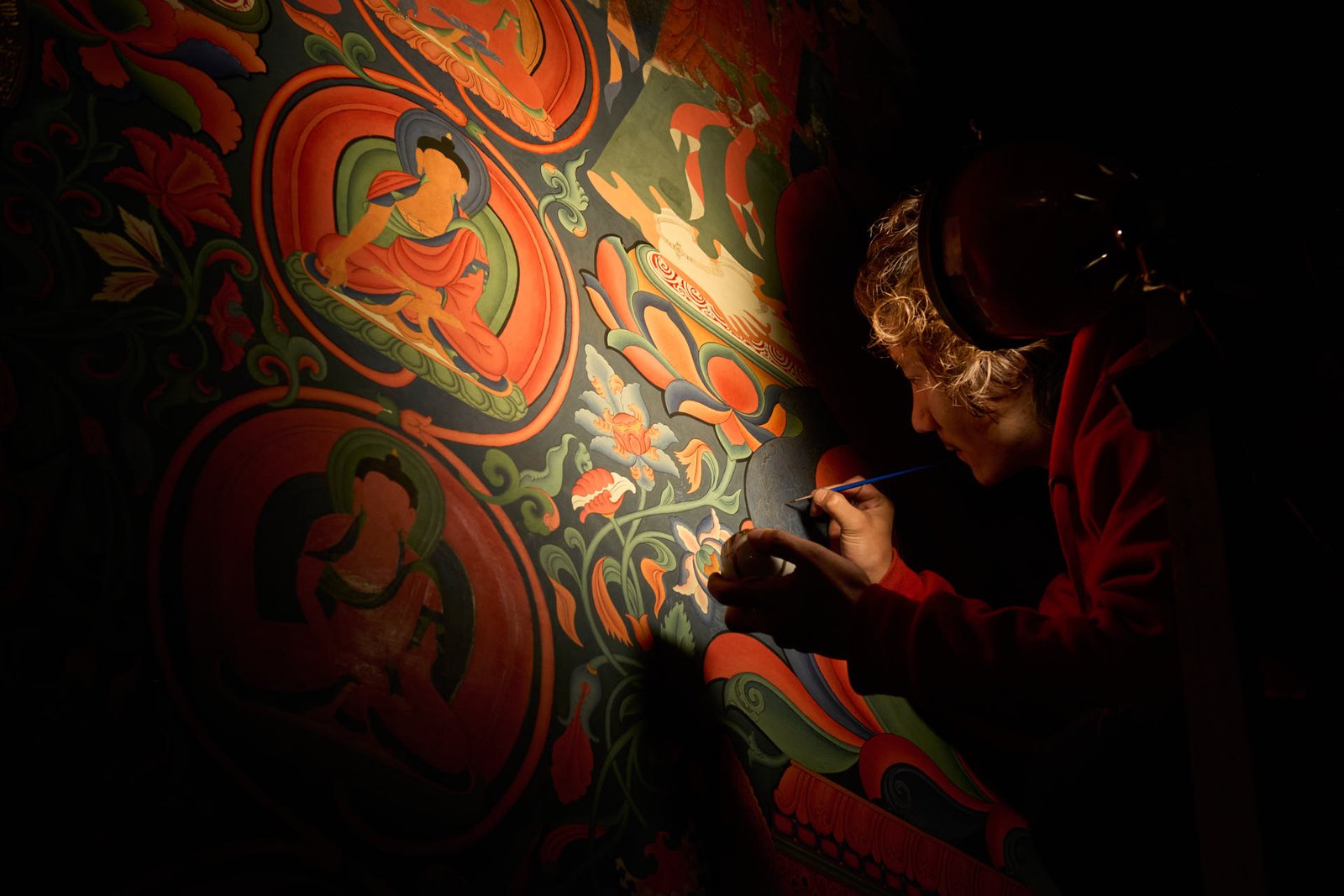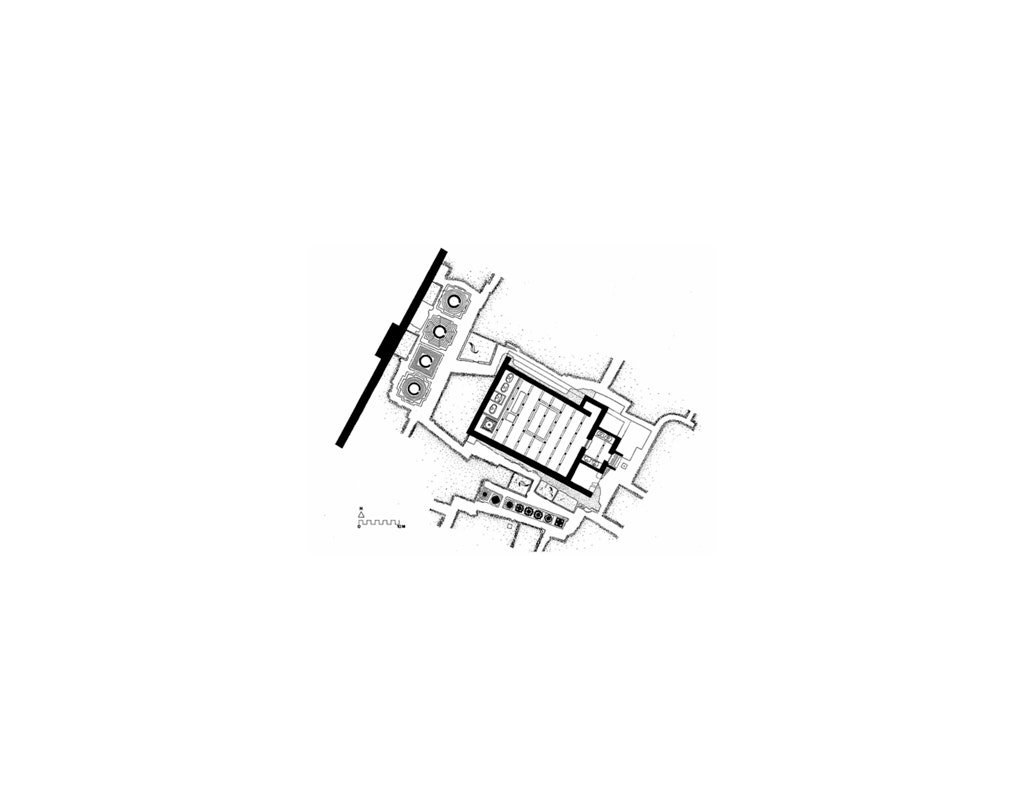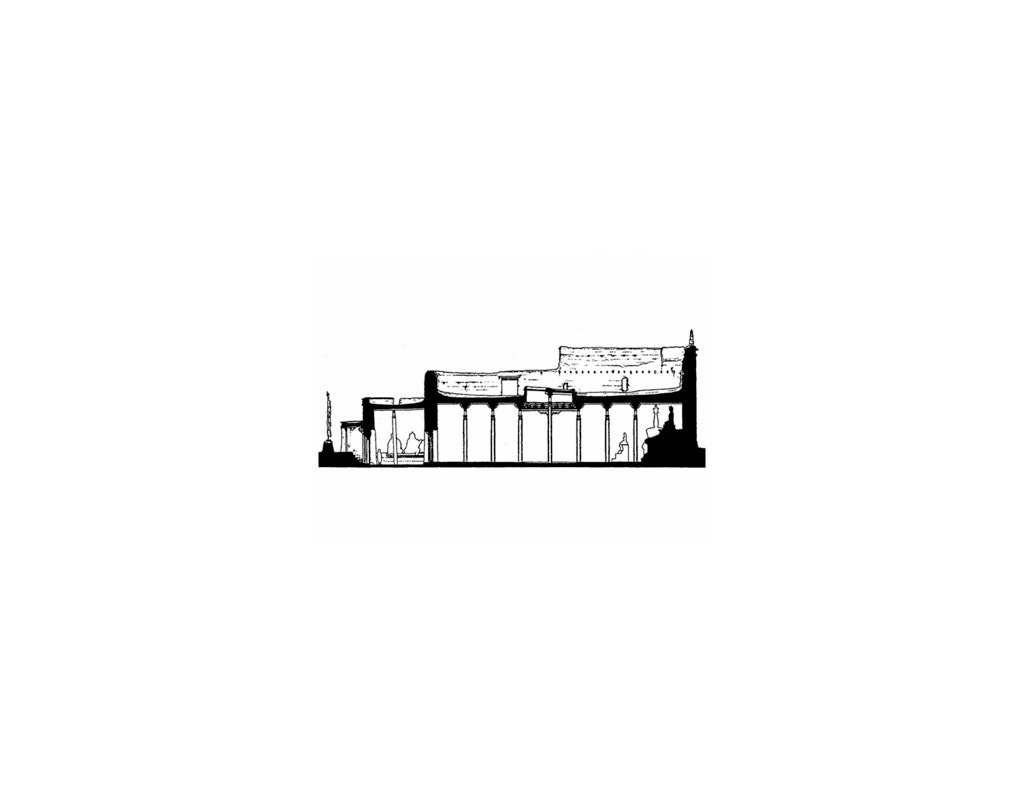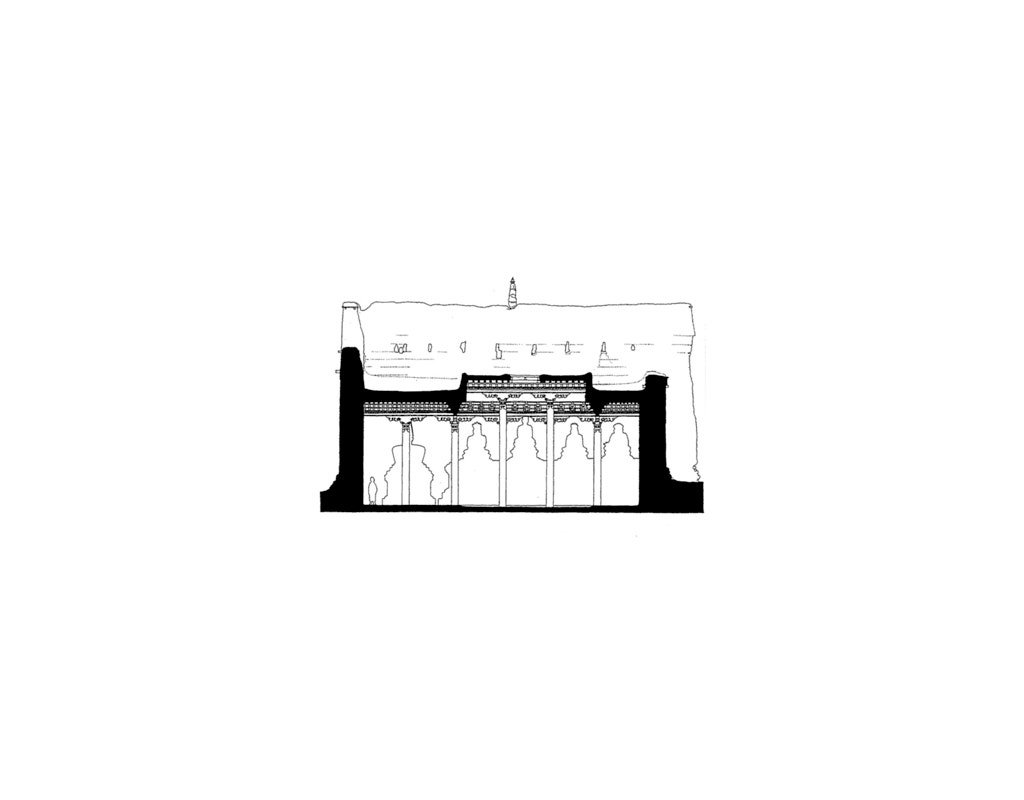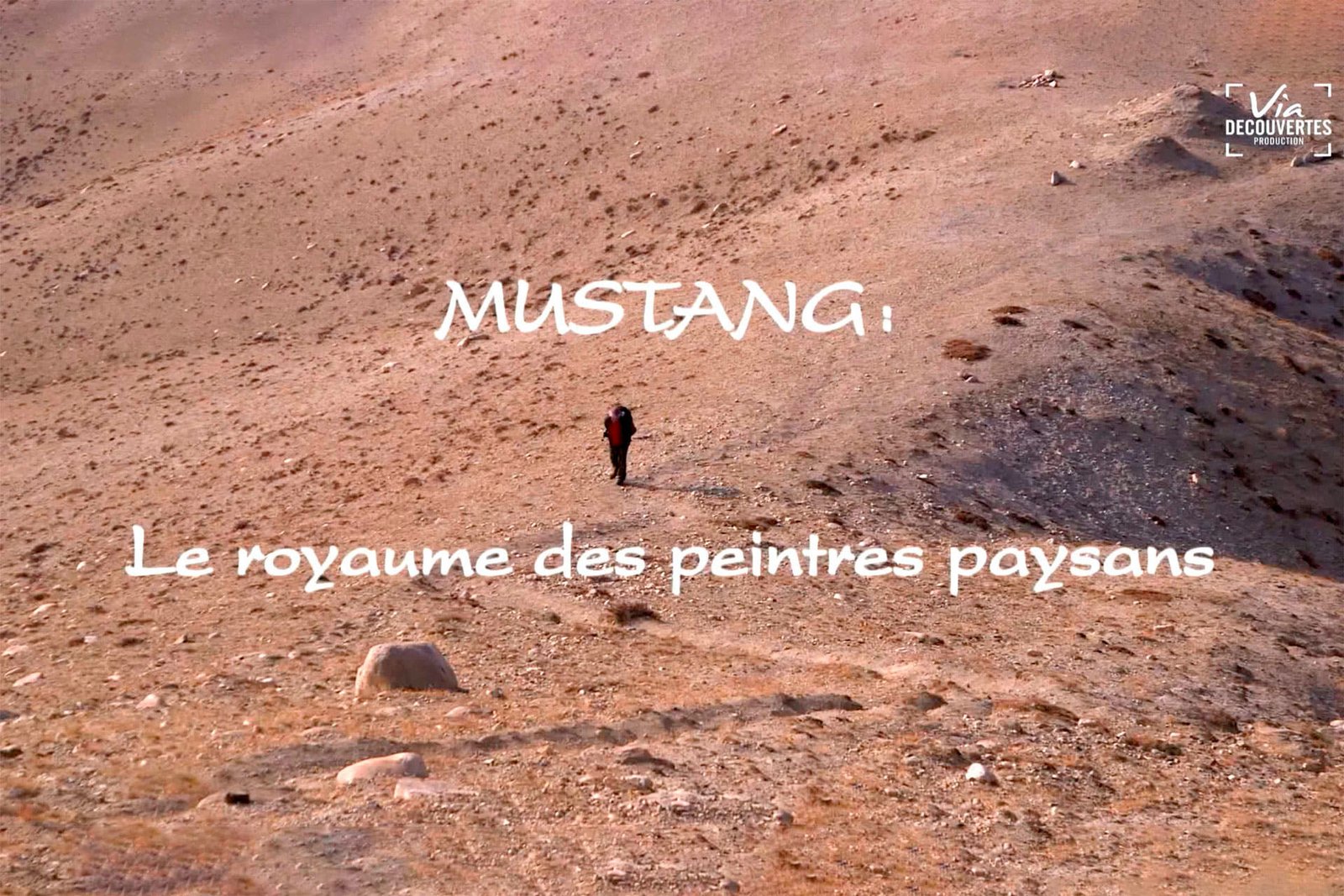When we started the pictorial integration in Tubchen monastery back in 2001, we adhered to the Western approach concerning the criteria for retouching wall paintings. This approach generally aims to avoid reconstructions. However, in 2003, an exception was granted with the approval of John Sanday Associates. This exception allowed for the reconstruction of substantial missing sections of two large Buddhas on the southern side of Tubchen and a portion of the upper decoration on the northern side of the East wall. The decision was made to enhance the visibility of the remaining pictorial cycle, ultimately bringing cohesion to the entire paint layer, particularly in the upper section.
the early end
The entire Lomanthang community found itself perplexed when the conservation work at Tubchen Gonpa concluded in 2004. The absence of further reconstructions left the entire lower section of the wall paintings covered with plaster below the paint layer. Bodhisattvas and Buddhas were depicted without their lower extremities, devoid of lotus flowers, and missing scenes, while the protective deities at the very bottom remained unreconstructed. For the community, the notion of leaving these parts unpainted seemed inconceivable and nonsensical.
Regardless of the community’s requests, the focus shifted to the conservation of Jampa Lhakhang while the project in Tubchen Gonpa was deemed complete, at least through the lens of Western perspectives.
a new beginning
Somehow things changed, and I changed as well. And when the local community asked once more to paint the missing part, the sponsors said yes, and so did I. Since 2011, regardless of all critics from the western world of academics, a reconstruction program was set up by The American Himalayan Foundation in order to complete all the missing wall paintings in Tubchen monastery and more than 150 square meters of lost paintings are being reconstructed following the XV century style (more than 340 square meters if the new north wall will be painted as well). Furthermore, with an accurate documentation, we have been mapping the locations of every reconstruction, so as to leave a record at the end of the project for future generations to understand where was the original artwork and where was the interpretation.
Here I would like to thank Samanta Ezeiza, who was my assistant to the project and who has worked tirelessly for the first two seasons.
To close this introduction, I would like to stress the importance that a a conservation philosophy should be shaped according to the culture’s needs and one single theory of conservation should not exist even though some principles could coexist. Cultures worldwide are very different and so should be the concept of conservation, if the latter is meant to be truly preserving a living cultural heritage site.
Scroll down to learn more about the process of recreating lost 15th-century wall paintings to complete the Tubchen Gonpa pictorial cycle.
